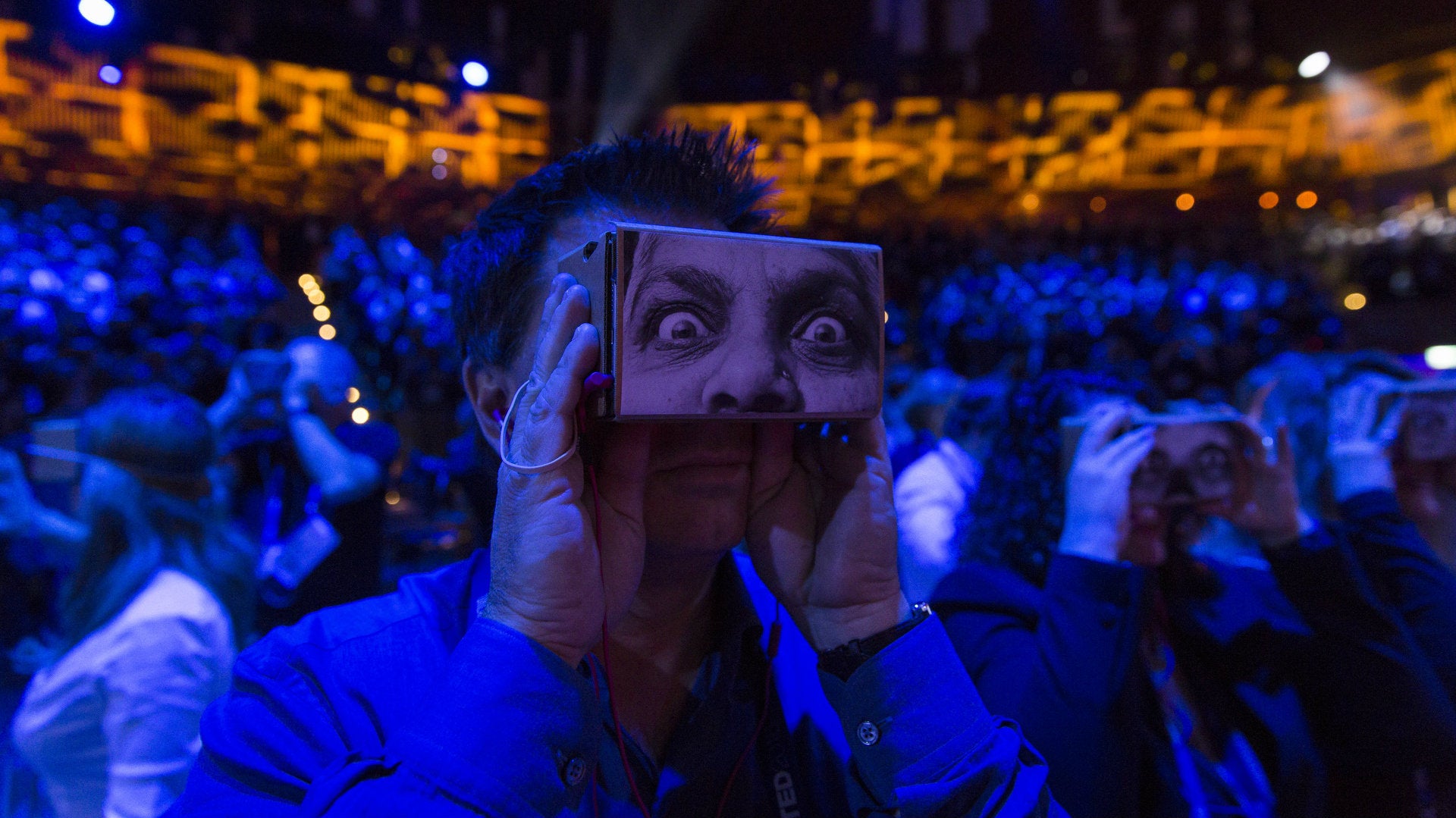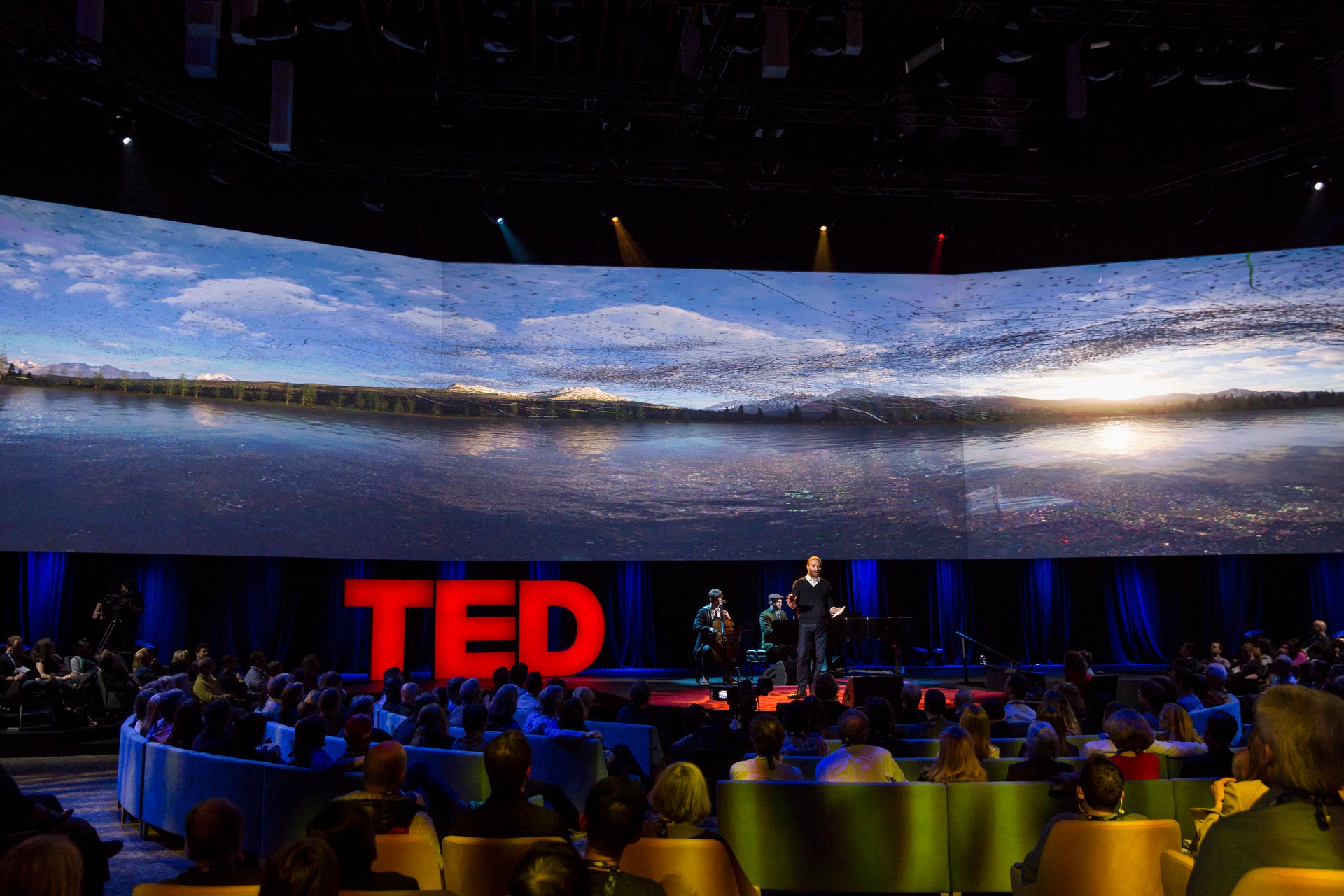This exhilarating virtual reality film is designed to make viewers more empathetic
Vancouver


Vancouver
At the start of this week’s TED 2016 conference, curator and founder Chris Anderson gave attendees some curious homework: Install an 890 megabyte app and wait. Last night, all was revealed.
In a thrilling demonstration of virtual reality technology, filmmaker Chris Milk showed a five-minute montage in the burgeoning storytelling medium. With mobiles inserted in Google Cardboard viewers (plastered with photos of eyes taken by street artist JR) the audience leapt from a placid lake to the ledge of a New York City highrise to a Syrian refugee camp. Earphones completed the experience, with the musical score helping direct the audience’s ”emotional attention,” as the composer Mckenzie Stubbert puts it.
The experiment was touted as the “largest collective virtual reality viewing in history,” with over 1,200 people in the audience and hundreds watching online.

“It’s amazing that you can take a cardboard box and add it to everybody’s smartphone and have an experience like that together,” says Milk. “People talk about VR as this isolating experience, where you go inside it and shut out the whole world. But I’m making things not just for people to relate to other human beings through them, not just the characters [in the story].”
Milk’s presentation was an evolution of a 2015 TED talk where he called virtual reality as “the ultimate empathy machine.”
In virtual reality films, viewers feel like participants in the unfolding narrative. ”With VR, your consciousness is the medium,” Milk says. Indeed, the word “watching” seems obsolete term for this kind of movie. Because VR cameras capture the 360 data in a scene, you feel more physically present and aware of the space—and other people—around you.

Viewers can turn their gaze in any direction and see something new. Looking up, there’s the ceiling of a ballroom and in your peripheral vision, musicians. Spinning around, Bono singing behind your shoulder. In another scene, inch a few steps forward and realize you’re standing dangerously close to the edge of a tall building. A clip was from his Milk’s 2015 UN-sponsored documentary, Clouds Over Sidra shows Syrian children in Jordan’s Za’atari refugee camp rushing to greet you. And in one luminous segment, a woman on a beach stands a bit too close, virtually infringing on your personal space. Her presence is inescapable. ”It feels like truth,” Milk describes.
Best known for directing music videos for the likes of U2 and Kanye, Milk co-founded Vrse.works, a virtual reality film production company testing possibilities of the new experiential medium beyond immersive video games. He says that the medium is still in its nascent stage.
“We’re just at the Train Coming into a Station [stage], referring to the screening of the 1896 Lumière Brothers documentary where the audience famously fled the theaters in horror, thinking that an approaching train was going leap from the screen and crash into them. ”We’re not quite going to have Citizen Kane next year.”
While video game-based VR platforms like The Void have advanced in interactivity components, cinematic or real life VR stories are just taking off, with Milk and a small group of filmmakers at the helm. “We focused first on the photorealistic worlds,” explains Milk. “Personally I believe that as human beings, we’re most affected by the stories about other human beings.”
Anyone with a VR viewer can now test Milk’s early experimentation through free Vrse’s app.